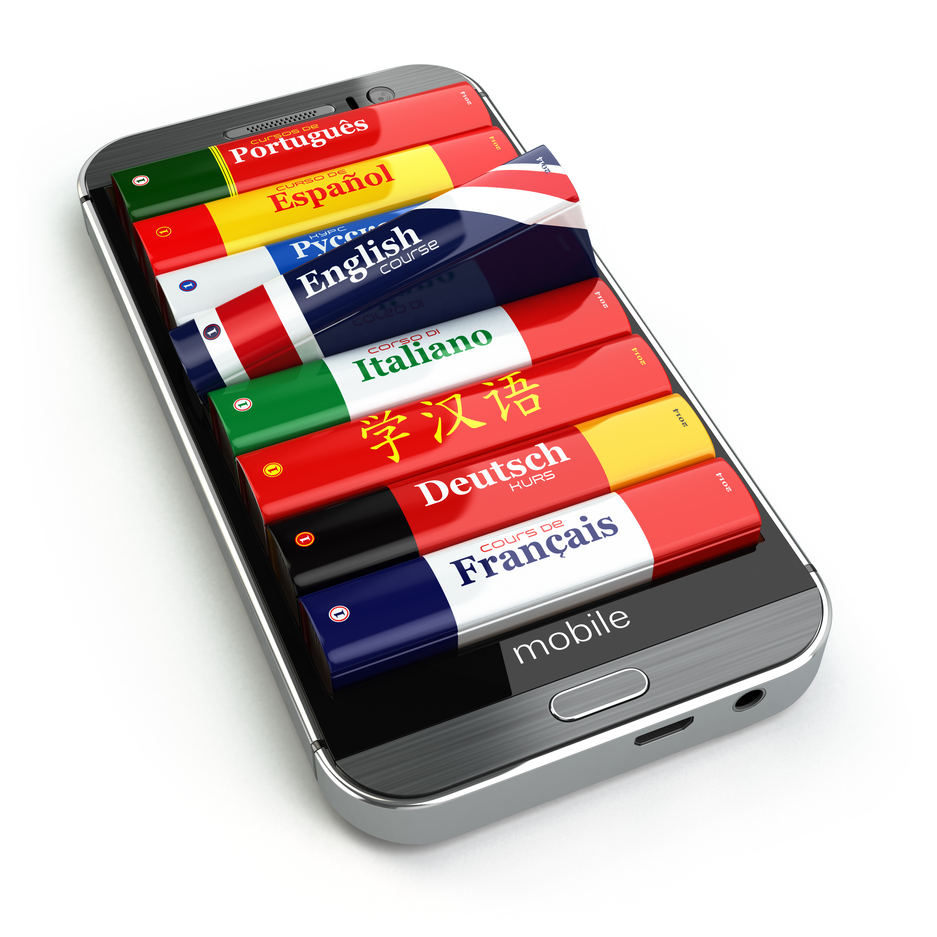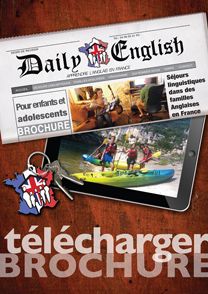
Use technology to create interesting, fun activities when teaching English to French students. Here are some great tips for teaching English the high-tech way in a home setting.
Bring on the Tech and Grab Your Host Students’ Interest
It takes some creative genius to put together fun classes and interesting activities when you are teaching English to French children as a host parent. As any experienced English teacher knows, small group settings can be some of the toughest. The level of intensity is higher, and it can be more difficult to fill class time adequately because there is not the natural time consumption that occurs when dealing with a large group of students.
So what can you do when you have bright little faces looking at you across the table and expecting some fun “edutainment”? The answer is simple – reach out to them through the channel that every modern young student is tuned into and understands well: digital technology.
Educational Technology: It’s Not Just for the Classroom
One of the basic challenges of teaching from home is the lack of practical educational infrastructure. Simple things taken for granted in a school setting such as white boards, activity tables, and other basic classroom accessories are usually not available. Certainly, computer workstations, digital projectors, smart boards, and education software are items only found in schools, right?
Wrong. One of the primary advantages of technology-enhanced teaching methods is the ability to take learning beyond the classroom and even eliminate the need for brick-and-mortar schools all together. With a little knowledge and a few tips, you can empower your home teaching strategy with technology-enhanced learning activities that mirror what is happening in the most well-equipped, advanced classrooms.

Your Tools are Already in Place
It is difficult to imagine a home without an Internet connection, and most families have a laptop around the house. And it is really difficult to imagine a young student without a smart phone. All you need is wireless Internet, and you have the keys to a world of teaching activities that will fully engage your students, keep them studying and learning well beyond your home “kitchen table classroom”, and have you teaching English like a pro in no time.
The next piece of the puzzle is the digital resources and software programs that turn your digital devices and Internet connection into the greatest teaching tools the world has ever known. Of course, the Internet is full of valuable reading materials, videos, and audio files. But there are also more teaching-specialized websites and material sources than you will ever visit, and there are thousands of sites dedicated to teaching English.
Many are completely free, like the amazing Grammar Aquarium, Interesting Things for ESL Students, or Duolingo. Others operate on a freemium model, with many free activities plus an enhanced version accessible for a small membership fee, for example Starfall. Just Google “ESL activities”, “teaching ESL”, or “ESL grammar” or any related key word to find more resources than you can possibly use.
Build It and They Will Learn
As you become comfortable teaching with technology, you may want to build your own customized activities. There are a number of sites created to help teachers with this, and they are designed to be easy to learn and simple to use. No specialized technology skills are needed. Everything is done by typing or copy-pasting in the words, questions, or texts you want to use. There may be a bit of drag-and-drop involved and a few clicks here and there. After all, the basic rule of educational technology is that it must be quick and easy to use, or teachers will not bother with it.
A great place to start is Quia. For a membership fee of about 45 Euros per year, you can build a large variety of games as well as quizzes on this easy-to-use website. Quia is one of the oldest interactive teaching activity builders on the web and a membership is one of the best investments in teaching materials you will ever make. Quizlet is another good one, a free flashcard creation site that is very easy to use and also has the advantage of providing access to materials created by other users.
A learning management system is an excellent tool for organizing, storing, and delivering lessons and activities to your students. An LMS makes it simple for your students to access multiple activities from a single source. You can create activities, arrange them in folders, set up different access timings and configurations, and track students’ completions and results if you wish.
Many students will already be familiar with using an LMS as they have become nearly universal in modern schools. Schoology is a great one for home teachers. Free and simple to use, Schoology is intended for use at the K-12 level, and it will do everything you need to deliver excellent digitally-enhanced lessons and activities. At the same time, it is a super user-friendly LMS and you can be well underway within an hour or so.
Learning on the Go
The really nice thing about digitizing some of your teaching activities is that students can use their smart phones or tablets for anytime, anyplace access to practice and learning. Playing vocabulary games, completing puzzles and word searches, and having quiz matches together with their native English speaker host siblings is one of the most effective strategies for teaching English to young students. Add in the ability to do so when riding in the car or on the train, or while sitting on the beach in Normandie or Bretagne and you are getting some real value out of your technology-enhanced teaching approaches.
Access to online resources also makes it easy to continue your students’ lessons if you are on a day or overnight trip away from home. There is no need to worry about packing books or materials. With a bit of advanced preparation and some downloading, it is possible to carry on good class sessions without Internet access. However, such lack of access will generally be rare because nearly all online resources will be accessible via a smart phone data plan, and most educational sites and activities are now designed to be mobile- and tablet-friendly.
When at Home, Do as the (Digital) Natives Do
Young people today have been called “digital natives” because they have been raised with the Internet and have grown up mobile devices in their hands. When you are teaching them with technology, you are literally speaking their universal native language. They brighten up and engage almost automatically, and you may find them taking the lead on many activities. Just remember to keep it interactive and communicative. Use pair- and group-work, competitive games, information sharing, problem solving, and presentation. Class time cannot be about students sitting in their own little bubbles staring at their screens like they already spend so much time doing.
It takes little more than basic skills at operating a laptop and making your way around the Internet to took amazing when teaching with technology. You are going to love it, and you may want to upgrade your game. Get a pair of laptop speakers, a small, portable projector, and use a whiteboard or white wall, and you will be as well-equipped as most university-based ESL instructors.
Putting on technology-enhanced lessons is far easier at home than it is in a classroom, where a teacher may have to deal with unfamiliar, poorly-maintained equipment in front of a large audience. Go digital with no fear at all and you will soon be offering incredibly rich and engaging learning experiences right at your own kitchen table.








